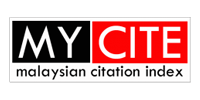Insights of MoO3 HTL in Perovskite Solar Cells from a Simulation Perspective
DOI:
https://doi.org/10.58915/ijneam.v17iDecember.1604Keywords:
MoO3, Perovskite Solar Cells, Hole Transport Layer, PCEAbstract
The charge carrier conduction mechanism plays an important role in determining efficient Perovskite Solar Cells (PSCs), one of which lies in the Hole Transport Layer (HTL). Nowadays, the organic Spiro-Ometad HTL has been widely used in conventional PSCs, but the cell performance is still hindered and limited by the ambient humidity stability issue. Herein, a solid-state Molybdenum Trioxide (MoO3) has been employed as the HTL in Pb-free PSCs. To comprehend its functional behaviour, a systematic study through the optimization of several critical parameters was carried out using SCAPs software. The high Power Conversion Efficiency (PCE) was achieved reaching 20.3% under AM 1.5 illumination, proving the high potential of MoO3 as HTL in PSC. With optimized parameters, the distinctive solid-state MoO3 has stood out among the top HTLs in PSC technology.

















